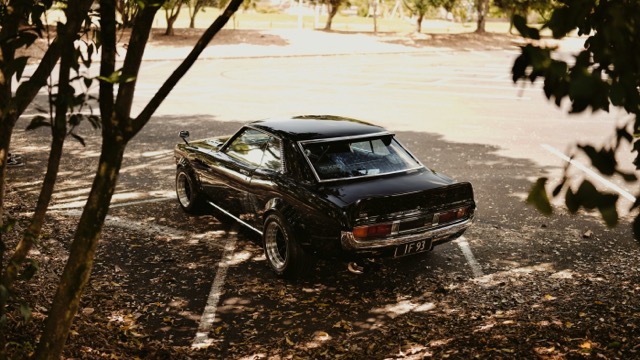The Jaguar XK120 is more than just a car; it’s a symbol of British engineering and racing heritage. Launched in the late 1940s, this stunning sports car quickly established itself as a formidable competitor on the racetrack. With its sleek design and innovative technology, the XK120 has captivated car enthusiasts and collectors alike. In this article, we’ll explore the origins of the XK120, its engineering marvels, its remarkable racing history, and provide insights for potential owners.
The Birth of the Jaguar XK120: A Racing Icon Emerges
The Jaguar XK120 first graced the automotive scene in 1948, introduced at the London Motor Show as a prototype. Its immediate popularity was evident; the car was designed to showcase the capabilities of Jaguar’s new XK engine, a 3.4-liter inline-six that promised impressive performance. The “120” in its name referred to its top speed of 120 mph, a remarkable feat at the time, signaling Jaguar’s ambition to dominate the sports car market.
The XK120 was initially intended for limited production, but the overwhelming public response led to a full-scale manufacturing rollout. The combination of its stunning aesthetics, characterized by smooth curves and a long hood, alongside its robust performance, quickly positioned the XK120 as a competitive player in both showrooms and racetracks. This initial success laid the groundwork for a legacy that would see the XK120 participate in numerous races across the globe.
As word spread about its capabilities, the XK120 soon found itself in the hands of privateers and professional racers alike. Its lightweight aluminum body and advanced engineering made it an ideal candidate for competition, and it wasn’t long before the car began to make waves in the motorsport world, solidifying its status as a racing icon.
Engineering Excellence: Performance Features of the XK120
At the heart of the XK120’s performance was its innovative 3.4-liter XK engine, which was equipped with dual overhead camshafts. This design allowed for high RPMs and smooth power delivery, giving drivers a thrilling experience behind the wheel. The engine was paired with a four-speed manual transmission, allowing for precise gear changes and an exhilarating driving experience. The attention to detail in the engineering process ensured that the XK120 could reach 0 to 60 mph in just about 8 seconds, remarkable for its time.
The car’s chassis was another engineering marvel, featuring a lightweight tubular design that provided not only strength but also agility. The independent front suspension system enhanced handling, allowing the XK120 to navigate corners with confidence. Disc brakes, a pioneering feature in the late 1940s, were introduced in later models, providing superior stopping power and contributing to the car’s overall performance.
Moreover, the XK120’s aerodynamic profile played a crucial role in its racing success. The sleek shape reduced drag and allowed the car to slice through the air more efficiently, enhancing its top speed. Collectively, these engineering features made the XK120 a standout contender on the racetrack and a beloved choice for driving enthusiasts.
Racing Triumphs: The XK120’s Legacy in Motorsports History
The Jaguar XK120 made its racing debut in 1949 at the Mille Miglia, where it not only participated but also captured the attention of the racing community with its impressive performance. Driven by accomplished racers, the XK120 quickly racked up numerous victories in events across Europe and the United States. Its participation in endurance races showcased its reliability and speed, further cementing its status as a serious contender.
Throughout the early 1950s, the XK120 continued to dominate various racing circuits, including the prestigious Le Mans 24 Hours. The car achieved remarkable results, with numerous top finishes, and its success on the global stage helped to elevate Jaguar’s reputation as a manufacturer of high-performance sports cars. The racing pedigree of the XK120 influenced subsequent models, setting the stage for Jaguar’s future in motorsports.
The legacy of the XK120 extends beyond its racing achievements; it represents a turning point in automotive design and engineering. The car’s blend of performance and elegance has inspired countless automotive designs over the decades, leaving an indelible mark in both motorsports and the collector car community.
Owning an XK120: Tips for Enthusiasts and Collectors
For those considering adding a Jaguar XK120 to their collection, it’s essential to understand the nuances of ownership. First, prospective buyers should conduct thorough research to identify the specific model they’re interested in, as there are several variants, including the Fixed Head Coupe, Drophead Coupe, and the Roadster. Each offers a unique driving experience and aesthetic appeal, so personal preference plays a significant role in the decision-making process.
Maintenance is another critical aspect of owning an XK120. Given its classic status, finding parts can sometimes be challenging, so building relationships with specialized suppliers and mechanics who understand vintage Jaguars is advisable. Regular maintenance, including oil changes and brake checks, will keep the car running smoothly and preserve its value over time. Joining Jaguar enthusiast clubs can also provide valuable resources and connections for maintenance tips and restoration advice.
Lastly, participating in classic car shows and events can enrich the ownership experience. Not only can these gatherings provide an opportunity to showcase your XK120, but they also allow for networking with fellow enthusiasts who share a passion for this iconic vehicle. Engaging with the community can lead to valuable insights, tips for care, and even potential restoration projects that keep the XK120 spirit alive.
The Jaguar XK120 is not just a car; it’s a testament to the artistry of automotive engineering and a cornerstone of motorsports history. From its inception to its racing triumphs, it has carved a niche in the hearts of car enthusiasts and collectors worldwide. Whether you’re contemplating ownership or simply admiring from afar, the XK120 continues to inspire awe and admiration, standing as a classic testament to Jaguar’s enduring legacy in the automotive world.








